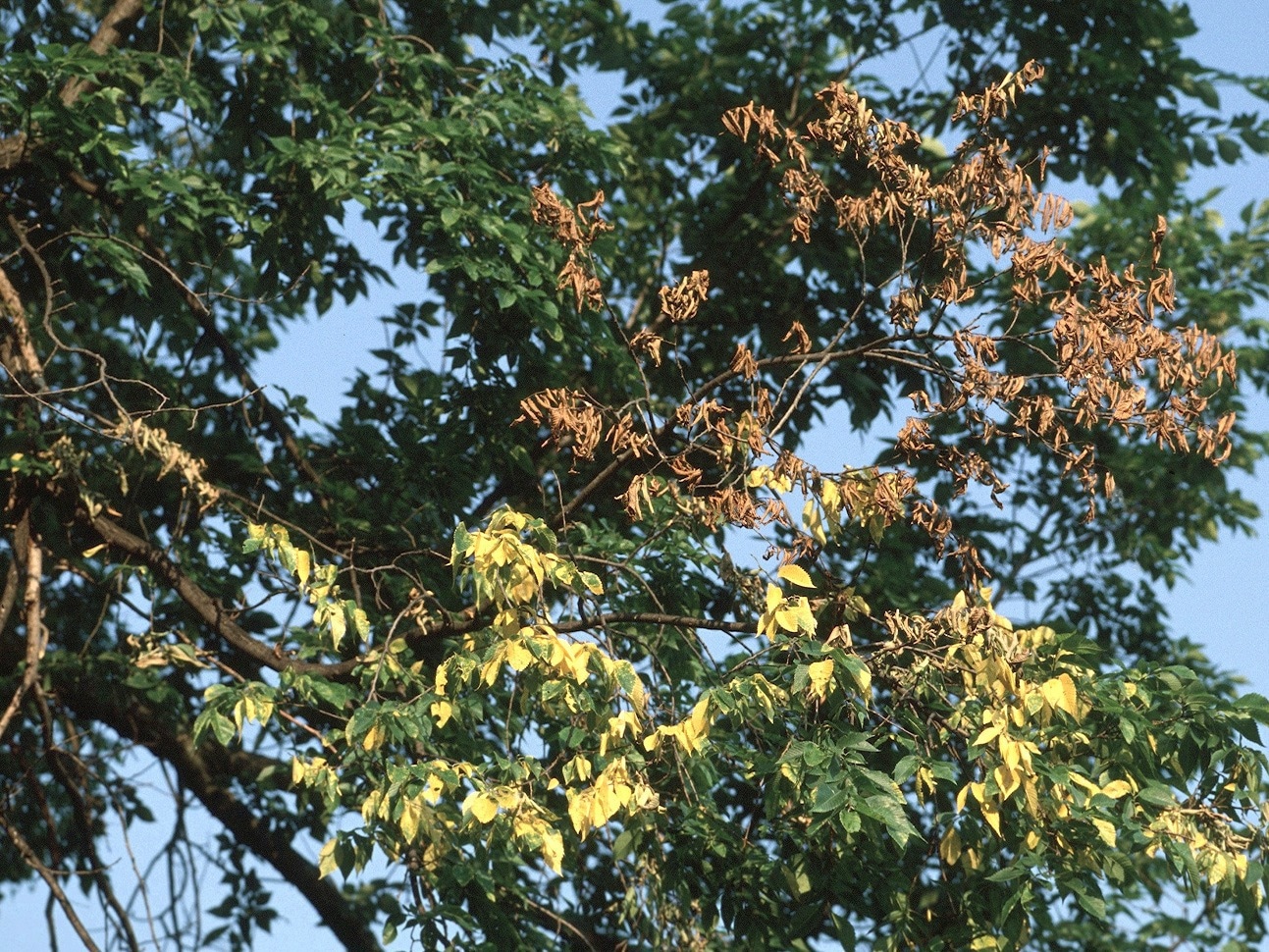The acceleration of global trade, tourism, and various forms of human movement has contributed to the rapid spread of tree and plant pathogens across continents. A notable example is Dutch elm disease, which was first observed in Europe in 1910 and reached Canada just four decades later.
 Evidence of Dutch elm disease (Ophiostoma ulmi) on an American elm (Ulnus americana). Image Credit: Joseph O’ Brien, USDA Forest Service, Bugwood.org.
Evidence of Dutch elm disease (Ophiostoma ulmi) on an American elm (Ulnus americana). Image Credit: Joseph O’ Brien, USDA Forest Service, Bugwood.org.
Since its introduction, Dutch elm disease has wreaked havoc, leading to the devastation of billions of elm trees in North America and Europe.
The issue is further exacerbated by climate change. Increasingly frequent and severe droughts weaken trees' resistance to diseases, especially infections originating from foreign regions to which they lack natural immunity.
What if it is possible to detect emerging diseases at ports and borders before they have a chance to spread?
Researchers at the University of British Columbia (UBC) have devised a method using genomics and machine learning that can not only identify known tree pathogens but also evaluate the potential threat posed by a novel, unidentified fungus solely based on its genetic characteristics.
Unlike other sample-analysis techniques that take days, this process can be completed in just a few hours.
The researchers aim to validate this concept through future field tests and are optimistic about its potential.
With this predictive tool, we can help prevent potentially invasive plant pathogens from causing severe disease outbreaks and inflicting environmental and economic damage—both the pathogens we are familiar with and those we have yet to encounter.
Erika Dort, Study Author and Ph.D. Candidate, Faculty of Forestry, University of British Columbia